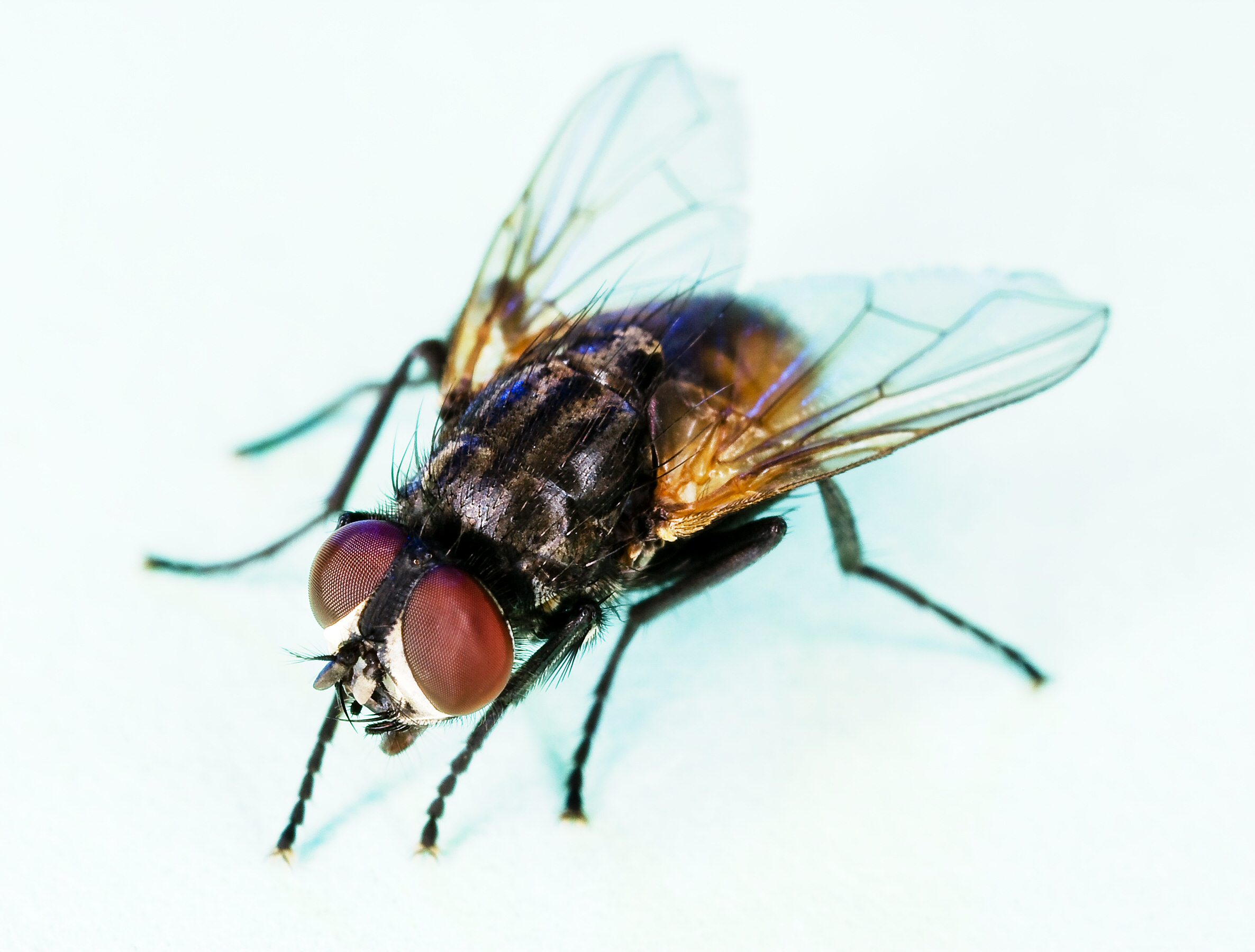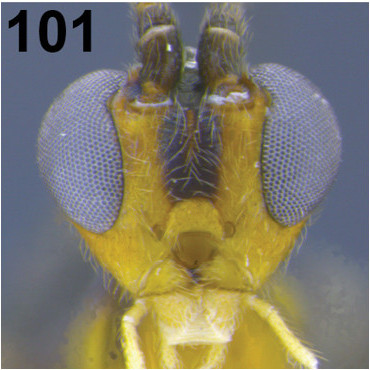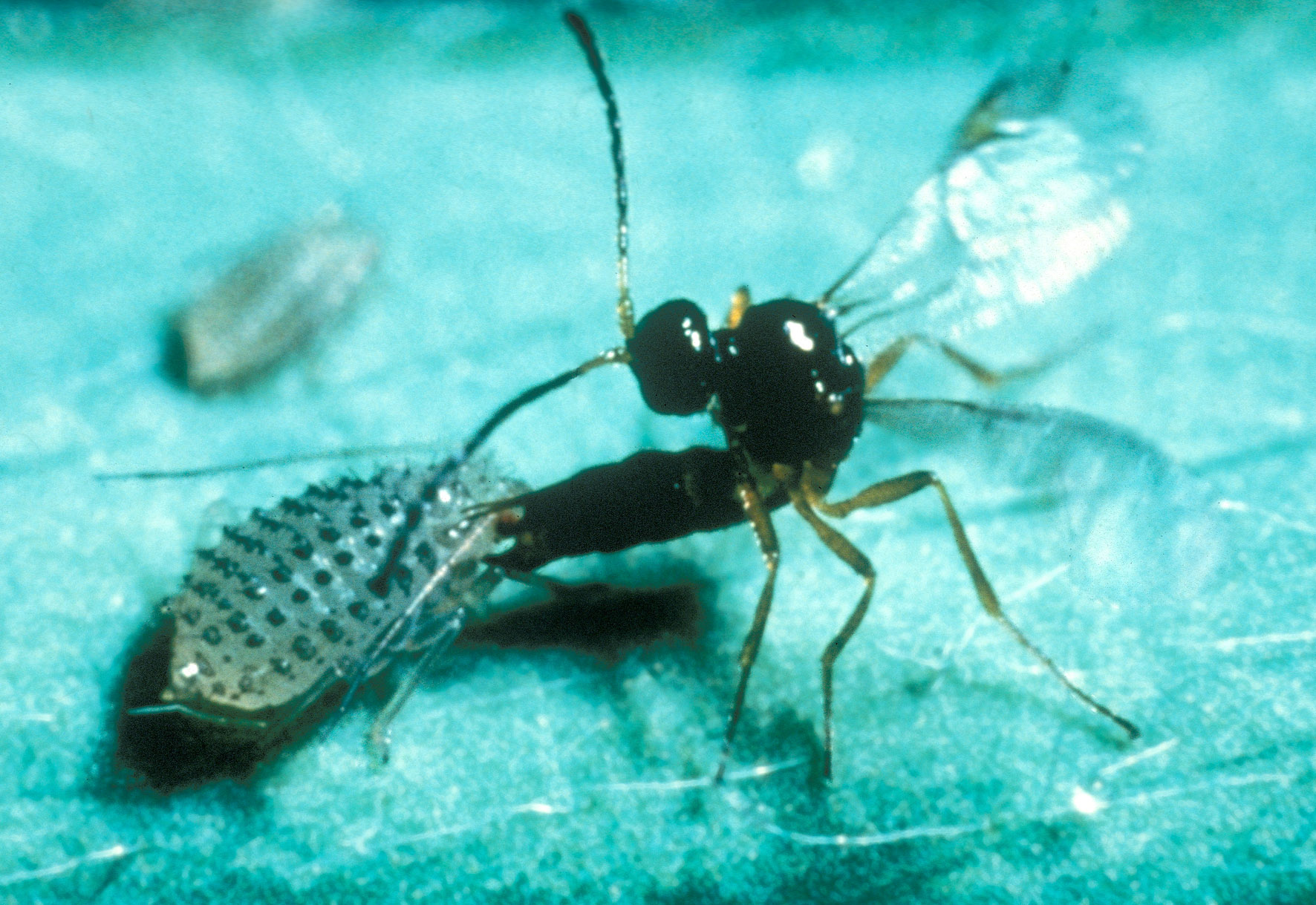|
Binodoxys Communis
''Binodoxys communis'' is a parasitoid wasp of the genus ''Binodoxys''. The genus ''Binodoxys'' is located in the subfamily ''Aphidiinae The Aphidiinae are a subfamily of tiny parasitoid wasps that use aphids as their hosts. Several species have been used in biological control programs of various aphids. Biology and distribution Aphidiines are koinobiont endoparasitoids of ad ...'' which are noted parasitoids of aphids. Description The adults of ''Binodoxys communis'' are approximately 1.2 mm in length. This small braconid wasp has a brown head, antennae, legs, and thorax. The wing venation is brown and the wings are nearly hyaline. The first tergite, trochanters, and the base of the tibiae are yellow. The rest of the abdomen is brown. Ovipositer sheaths and prongs are relatively lighter in color. Economic value ''Binodoxys communis'' was released in the United States prior to 1979 to control ''Aphis gossypii'' (Glover), but establishment resulting from that r ... [...More Info...] [...Related Items...] OR: [Wikipedia] [Google] [Baidu] |
Animal
Animals are multicellular, eukaryotic organisms in the Kingdom (biology), biological kingdom Animalia. With few exceptions, animals Heterotroph, consume organic material, Cellular respiration#Aerobic respiration, breathe oxygen, are Motility, able to move, can Sexual reproduction, reproduce sexually, and go through an ontogenetic stage in which their body consists of a hollow sphere of Cell (biology), cells, the blastula, during Embryogenesis, embryonic development. Over 1.5 million Extant taxon, living animal species have been Species description, described—of which around 1 million are Insecta, insects—but it has been estimated there are over 7 million animal species in total. Animals range in length from to . They have Ecology, complex interactions with each other and their environments, forming intricate food webs. The scientific study of animals is known as zoology. Most living animal species are in Bilateria, a clade whose members have a Symmetry in biology#Bilate ... [...More Info...] [...Related Items...] OR: [Wikipedia] [Google] [Baidu] |
Arthropod
Arthropods (, (gen. ποδός)) are invertebrate animals with an exoskeleton, a Segmentation (biology), segmented body, and paired jointed appendages. Arthropods form the phylum Arthropoda. They are distinguished by their jointed limbs and Arthropod cuticle, cuticle made of chitin, often Mineralization (biology), mineralised with calcium carbonate. The arthropod body plan consists of segments, each with a pair of appendages. Arthropods are bilaterally symmetrical and their body possesses an exoskeleton, external skeleton. In order to keep growing, they must go through stages of moulting, a process by which they shed their exoskeleton to reveal a new one. Some species have wings. They are an extremely diverse group, with up to 10 million species. The haemocoel, an arthropod's internal cavity, through which its haemolymph – analogue of blood – circulates, accommodates its interior Organ (anatomy), organs; it has an open circulatory system. Like their exteriors, the internal or ... [...More Info...] [...Related Items...] OR: [Wikipedia] [Google] [Baidu] |
Insect
Insects (from Latin ') are pancrustacean hexapod invertebrates of the class Insecta. They are the largest group within the arthropod phylum. Insects have a chitinous exoskeleton, a three-part body (head, thorax and abdomen), three pairs of jointed legs, compound eyes and one pair of antennae. Their blood is not totally contained in vessels; some circulates in an open cavity known as the haemocoel. Insects are the most diverse group of animals; they include more than a million described species and represent more than half of all known living organisms. The total number of extant species is estimated at between six and ten million; In: potentially over 90% of the animal life forms on Earth are insects. Insects may be found in nearly all environments, although only a small number of species reside in the oceans, which are dominated by another arthropod group, crustaceans, which recent research has indicated insects are nested within. Nearly all insects hatch from eggs ... [...More Info...] [...Related Items...] OR: [Wikipedia] [Google] [Baidu] |
Hymenoptera
Hymenoptera is a large order of insects, comprising the sawflies, wasps, bees, and ants. Over 150,000 living species of Hymenoptera have been described, in addition to over 2,000 extinct ones. Many of the species are parasitic. Females typically have a special ovipositor for inserting eggs into hosts or places that are otherwise inaccessible. This ovipositor is often modified into a stinger. The young develop through holometabolism (complete metamorphosis)—that is, they have a wormlike larval stage and an inactive pupal stage before they mature. Etymology The name Hymenoptera refers to the wings of the insects, but the original derivation is ambiguous. All references agree that the derivation involves the Ancient Greek πτερόν (''pteron'') for wing. The Ancient Greek ὑμήν (''hymen'') for membrane provides a plausible etymology for the term because species in this order have membranous wings. However, a key characteristic of this order is that the hindwings are co ... [...More Info...] [...Related Items...] OR: [Wikipedia] [Google] [Baidu] |
Braconidae
The Braconidae are a family of parasitoid wasps. After the closely related Ichneumonidae, braconids make up the second-largest family in the order Hymenoptera, with about 17,000 recognized species and many thousands more undescribed. One analysis estimated a total between 30,000 and 50,000, and another provided a narrower estimate between 42,000 and 43,000 species. Classification The Braconidae are currently divided into about 47 subfamilies and over 1000 genera, which include '' Aerophilus'', '' Aleiodes'', '' Apanteles'', '' Asobara'', '' Bracon'', '' Cenocoelius'', '' Chaenusa'', '' Chorebus'', ''Cotesia'', '' Dacnusa'', ''Diachasma'', ''Microgaster'', '' Opius'', '' Parapanteles'', '' Phaenocarpa'', '' Spathius'', and '' Syntretus.'' These fall into two major groups, informally called the cyclostomes and noncyclostomes. In cyclostome braconids, the labrum and the lower part of the clypeus are concave with respect to the upper clypeus and the dorsal margin of the mandi ... [...More Info...] [...Related Items...] OR: [Wikipedia] [Google] [Baidu] |
Binodoxys
''Binodoxys'' is a genus of parasitoid wasp of the subfamily Aphidiinae which are noted parasitoids of aphids. Its species generally prey on aphids which live on herbaceous plants Herbaceous plants are vascular plants that have no persistent woody stems above ground. This broad category of plants includes many perennials, and nearly all annuals and biennials. Definitions of "herb" and "herbaceous" The fourth edition of t .... Species The following species are accepted within ''Binodoxys'': * '' Binodoxys acalephae'' (Marshall, 1896) * '' Binodoxys achalensis'' Stary, 2004 * '' Binodoxys acyrthosiphonis'' (Stary, 1983) * '' Binodoxys angelicae'' (Haliday, 1833) ** '' Binodoxys angelicae sikkimensis'' (Raychaudhuri, Samanta, Pramanik, Tamili & Sarkar, 1990) * '' Binodoxys angolensis'' (Stary & Harten, 1977) * '' Binodoxys basicurvus'' (Shuja-Uddin, 1973) * '' Binodoxys basituber'' (Stary & Remaudiere, 1982) * '' Binodoxys benoiti'' (Mackauer, 1959) * '' Binodoxys brevicorn ... [...More Info...] [...Related Items...] OR: [Wikipedia] [Google] [Baidu] |
Parasitoid
In evolutionary ecology, a parasitoid is an organism that lives in close association with its host (biology), host at the host's expense, eventually resulting in the death of the host. Parasitoidism is one of six major evolutionarily stable strategy, evolutionary strategies within parasitism, distinguished by the fatal prognosis for the host, which makes the strategy close to predation. Among parasitoids, strategies range from living inside the host (''endoparasitism''), allowing it to continue growing before emerging as an adult, to Paralysis, paralysing the host and living outside it (''ectoparasitism''). Hosts can include other parasitoids, resulting in hyperparasitism; in the case of oak galls, up to five levels of parasitism are possible. Some parasitoids Behavior-altering parasite, influence their host's behaviour in ways that favour the propagation of the parasitoid. Parasitoids are found in a variety of Taxon, taxa across the insect superorder Endopterygota, whose compl ... [...More Info...] [...Related Items...] OR: [Wikipedia] [Google] [Baidu] |
Wasp
A wasp is any insect of the narrow-waisted suborder Apocrita of the order Hymenoptera which is neither a bee nor an ant; this excludes the broad-waisted sawflies (Symphyta), which look somewhat like wasps, but are in a separate suborder. The wasps do not constitute a clade, a complete natural group with a single ancestor, as bees and ants are deeply nested within the wasps, having evolved from wasp ancestors. Wasps that are members of the clade Aculeata can Stinger, sting their prey. The most commonly known wasps, such as yellowjackets and hornets, are in the family Vespidae and are Eusociality, eusocial, living together in a nest with an egg-laying queen and non-reproducing workers. Eusociality is favoured by the unusual haplodiploid system of sex-determination system, sex determination in Hymenoptera, as it makes sisters exceptionally closely related to each other. However, the majority of wasp species are solitary, with each adult female living and breeding independently ... [...More Info...] [...Related Items...] OR: [Wikipedia] [Google] [Baidu] |
Aphidiinae
The Aphidiinae are a subfamily of tiny parasitoid wasps that use aphids as their hosts. Several species have been used in biological control programs of various aphids. Biology and distribution Aphidiines are koinobiont endoparasitoids of adult and immature aphids. While the larva of the 2–3 mm long '' Praon'' leaves the hollowed shell of the aphid from below to pupate in a volcano-like cocoon, most other Aphidiinae pupate inside the dead aphid and break out afterwards. These wasps are found worldwide, but are primarily found in the northern hemisphere. Several species have been introduced to countries outside of their natural range, both accidentally and purposefully for biocontrol. Systematics Although they have often been treated as a separate family, the Aphidiidae, the Aphidiinae are a lineage within the Braconidae. It is not yet clear to which braconid subfamilies they are most closely related. The Aphidiinae are subdivided into several tribes, the Ephedrin ... [...More Info...] [...Related Items...] OR: [Wikipedia] [Google] [Baidu] |
Aphids
Aphids are small sap-sucking insects and members of the superfamily Aphidoidea. Common names include greenfly and blackfly, although individuals within a species can vary widely in color. The group includes the fluffy white woolly aphids. A typical life cycle involves flightless females giving live birth to female nymphs—who may also be already pregnant, an adaptation scientists call telescoping generations—without the involvement of males. Maturing rapidly, females breed profusely so that the number of these insects multiplies quickly. Winged females may develop later in the season, allowing the insects to colonize new plants. In temperate regions, a phase of sexual reproduction occurs in the autumn, with the insects often overwintering as eggs. The life cycle of some species involves an alternation between two species of host plants, for example between an annual crop and a woody plant. Some species feed on only one type of plant, while others are generalists, coloni ... [...More Info...] [...Related Items...] OR: [Wikipedia] [Google] [Baidu] |







